THE MAKING OF A CALABASH PIPE - PAGE 5 OF 8
THE STEM & THE FERRULE
The next thing I needed was a bent stem. I also needed a wooden ferrule. All calabash pipes have a ferrule, to prevent the gourd from cracking by the pressure of the tenon of the stem. Instead of trying to make, or to find the proper stem for my calabash, I searched to find a cheap pipe, with a stem close to what I had in mind. I also intended to use the shank of the pipe as a ferrule, as it was already drilled properly.
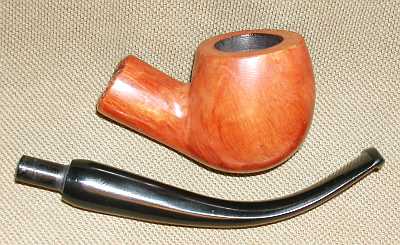
I found this unsmoked basket pipe, and I bought it for 8,70 euros. It's a medium size, partly bent, greek "Pipex" pipe, with a nice grain, and no fills at all. It was hard for me to destroy it, but fortunatelly, all the parts of the pipe were used in the calabash.
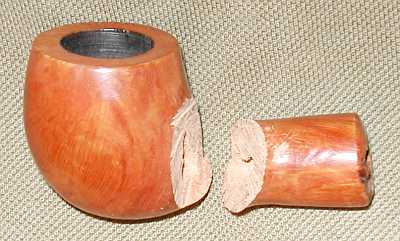
After I cut the shank off the bowl, I used it to make a ferrule for my calabash. I shaped it as a slightly tapered cylinder, with rounded edges on the wide side, using files and grit papers.
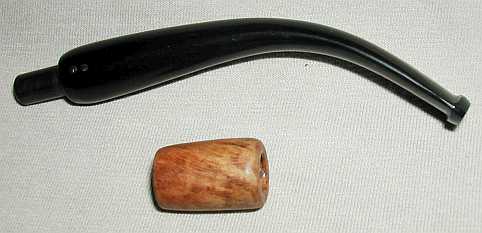
The stem needed some more bending. After I inserted a pipe cleaner, I bent the stem to the desired angle, by shaking it over the flame of an alcohol lamp. When the angle was right, I cooled it with water. I rounded the edges near the tenon, a little more, with a file, and polished all the stem with fine grit paper, steel wool and toothpaste.
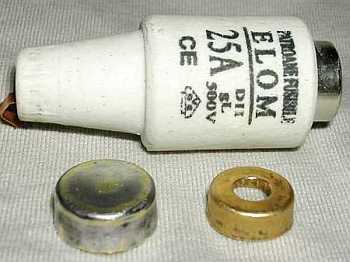
I always liked the silver bands on the pipes. I also wanted to add a metalic band, in order to reinforce the shank of the gourd, but I didn't want to cover the nice briar ferrule. So, I decided to add a narrow band, just on the joint of the ferrule and the gourd. A bronze, chrome-plated cup of an old electric fuse, was what I needed. I opened an wide hole on the one side, and made the other side a little wider. I sanded most of the chrome-plating, having in mind to silver-plate it (see page 7, "The Final Stage").
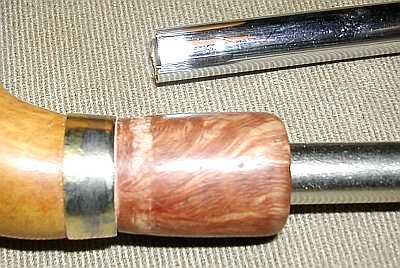
I needed a durable tube, about 7mm in diameter, to join the ferrule and the gourd. I found a piece of an old radio antenna, a bronze chrome-plated tube, in the right diameter. I inserted the tube deep into the gourd, and I made sure that all parts were in line. Then I removed the ferulle, and I cut the tube right on the point were the tenon stops inside the ferulle. I placed the ferulle again, with the stem attached, to check if the stem is leaning left or right. Finally, I glued the tube, the band and the ferulle in place, using acrylic glue. After the glue dried, I checked the mortise, the tube and the gourd for obstacles. The air flow was perfect, and any pipe cleaner, a little bent, could easily pass through the mortise, to the top of the gourd.
<= BACK
 HOME
HOME
 NEXT =>
NEXT =>






